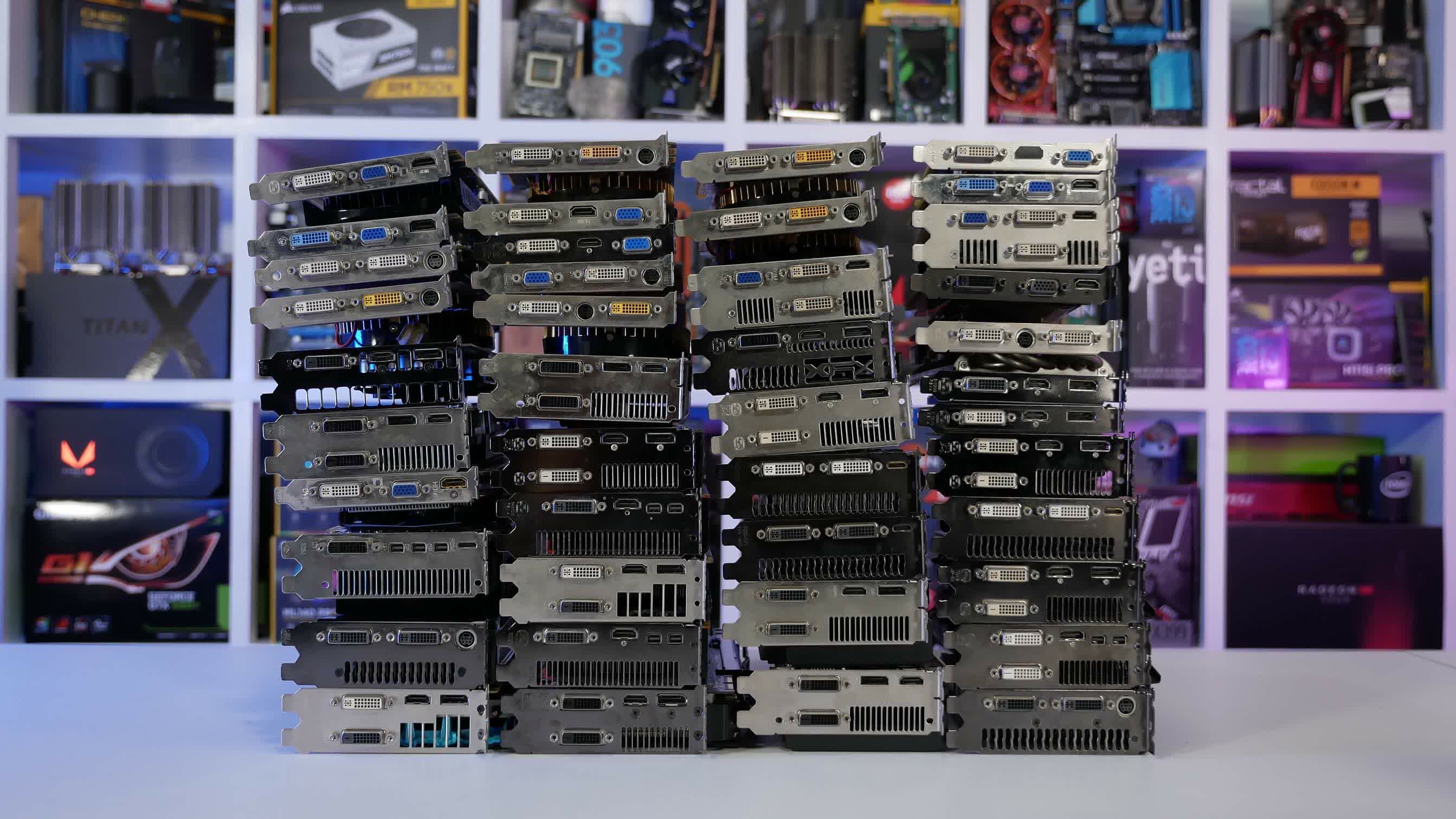CPU and graphics card pricing and availability are still a mess, but is the situation improving? Can we expect to get back to PC building any time soon? As the crisis of component availability goes on, we thought it would be a good idea to check to see what the current situation is and if we are headed in a better or worse direction.
Updated: See our latest GPU Pricing Update here.
Let's take a look at what is happening in the market right now...
Current GPU Market
Let's talk about graphics cards first. The key question on everyone's mind is: when will this madness end? When are GPUs actually going to be in stock, and what are things looking like today?
Unless you've been living under a rock, it'll come as no surprise that you cannot buy a current or previous generation GPU from any brand at the MSRP right now. On Newegg, the fastest GPU you can actually purchase at something near the MSRP is the GeForce GT 1030, although this is supposed to be an $80 product and it's being sold for well over $120.
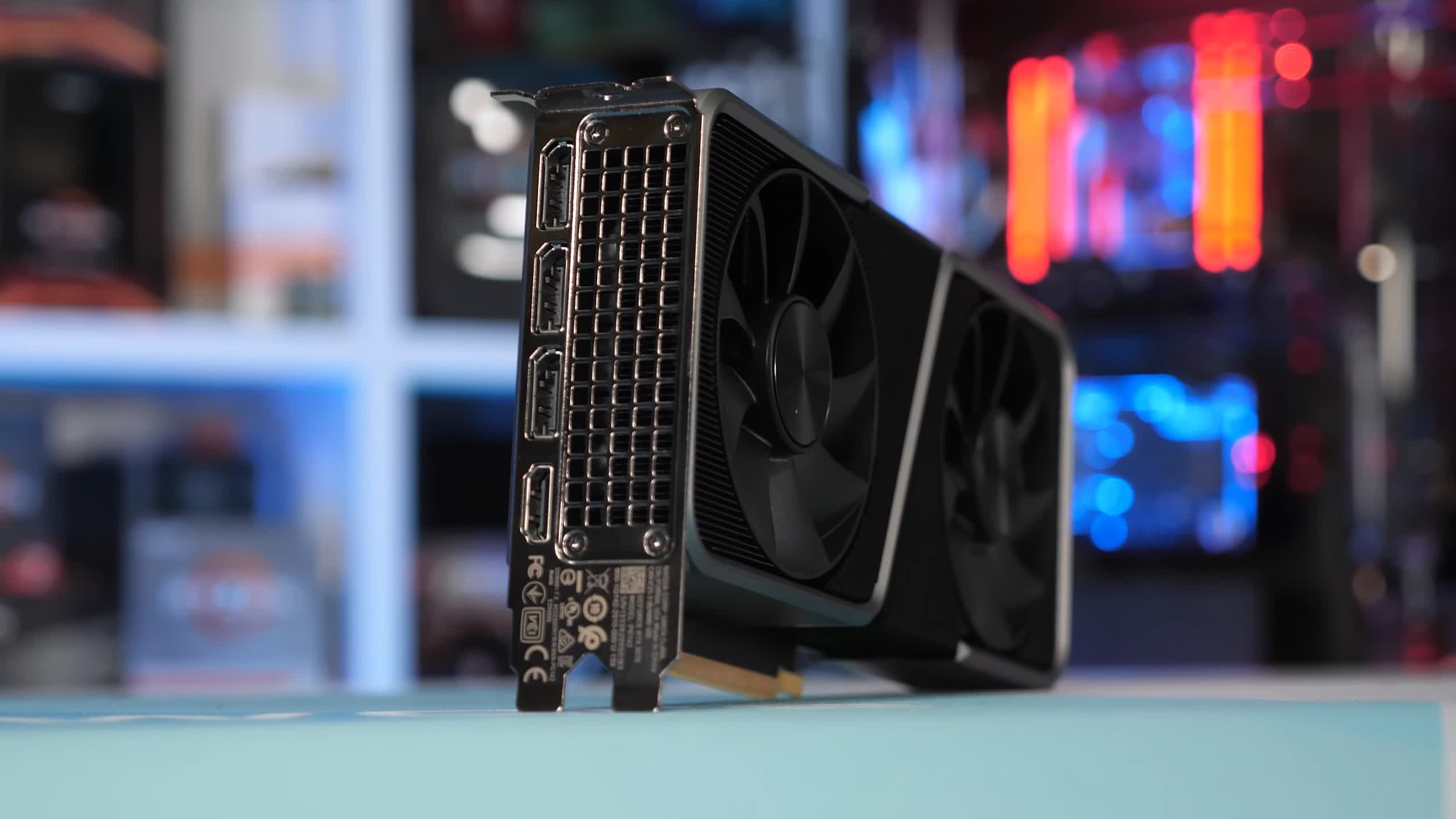
If you want a faster graphics card from Nvidia's RTX 30 series or AMD's Radeon RX 6000 series, you'll have to have your finger on the pulse for when these cards come in stock.
But that situation only applies to some markets. In the US, for example, retailers tend to sell cards directly from OEMs at or near the MSRP when they have stock, bypassing local distributors. In other regions like Australia, buyers are stuck with a different situation: current-gen GPUs can be found in stock, but the pricing is ridiculous.
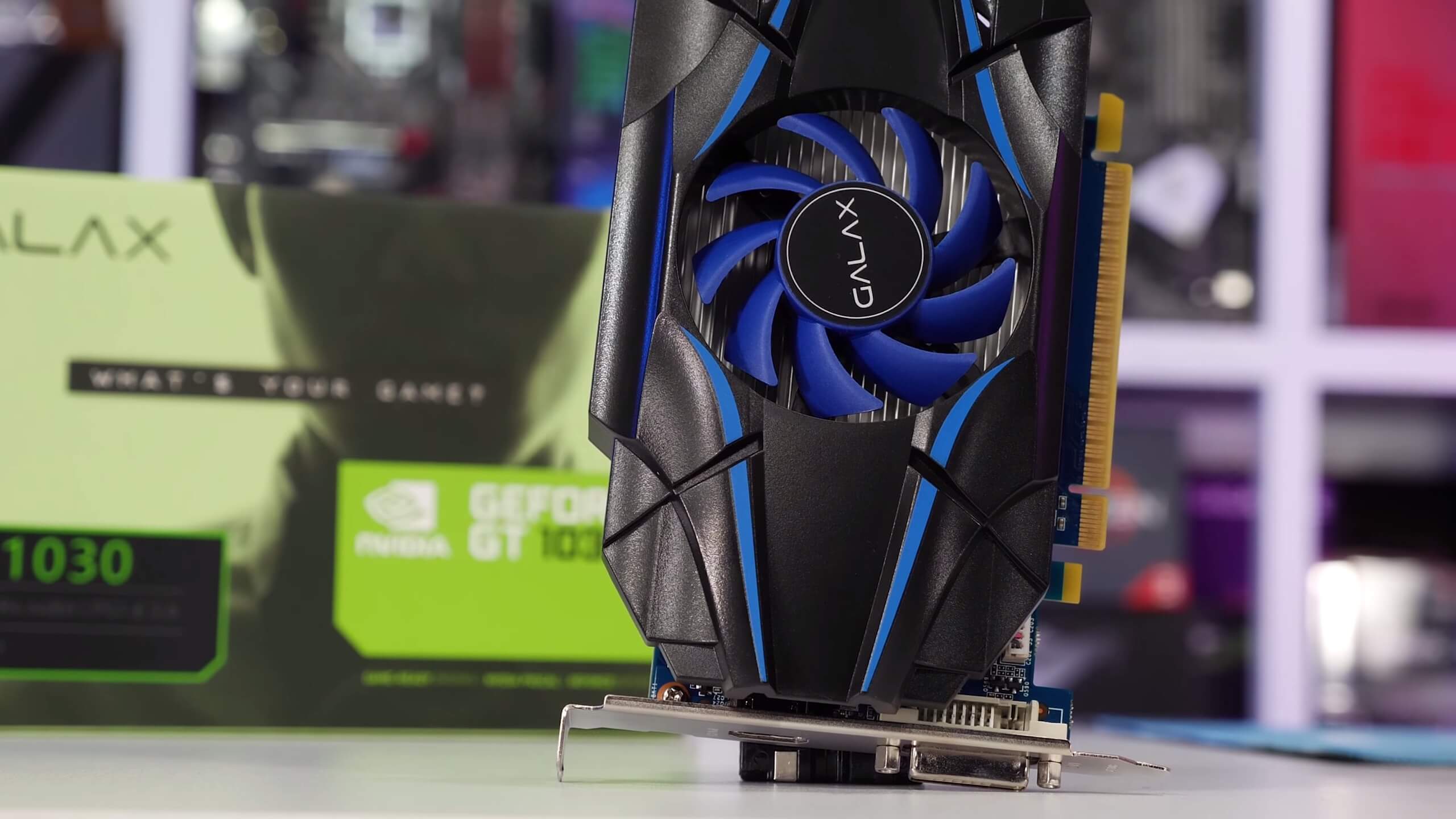
Down under at PC Case Gear, there is limited supply for all current GPUs except for the RTX 3080 and RTX 3060 Ti. But the cards' pricing is grossly inflated. The cheapest RTX 3090 is being sold at $3,200 AUD, which is roughly 1000 AUD higher than the base MSRP.
The same can be said for other models. The cheapest RTX 3070 is about $600 too expensive, and so on. The RX 6800 XT and RX 6800 are about $750 and $600 overpriced, respectively. And that applies for every other retailer in Australia which I use as an example because it's closest to home, but a quick glance at several other countries reveals similar behavior.
Cards like the RTX 3060 are being sold in Europe for the equivalent of $600, for a product with a $330 MSRP. It's an absolute joke.
So, we're faced with one of two bad situations. Either you can see products listed at the MSRP but you can't buy them, or you can buy products but are faced with insanely inflated pricing. And we've been in this situation for many months now.
Why are Prices so High?
As for the reasons why, what we are hearing from various parties remains the same: everyone is looking to blame someone else. Retailers are blaming distributors and OEMs depending on the regional distribution, claiming that any time they look to re-order new GPUs to sell, suddenly the prices have increased. We have a good relationship with some retailers in Australia, and the message has been consistent: they cannot sell graphics cards cheaper locally or they would be losing money, and they are frustrated at being blamed for ridiculously high prices.
As for the reasons why, what we are hearing from various parties remains the same: everyone is looking to blame someone else.
Graphics card makers claim that their margins for new GPUs are similar to previous generations, suggesting that instead of OEMs inflating prices and passing that down to retailers, it's AMD and Nvidia making these cards expensive to purchase.
But then when we ask AMD and Nvidia, we hear frustration similar to retailers, where they claim lower priced graphics cards should be possible and are annoyed, they aren't getting a slice of the inflated pricing pie when prices do increase.
We don't have contacts at distributors, so we were unable to gauge their position on this. But I'd imagine that like retailers, partners and GPU makers, they too would look to pass the blame onto someone else. The lack of clarity on why prices at some retailers - not even scalpers on eBay - is so high seems suspicious, given that we're now months into this market situation. No one has been willing to explicitly identify why a $330 GPU is selling for almost twice its list price in some regions.
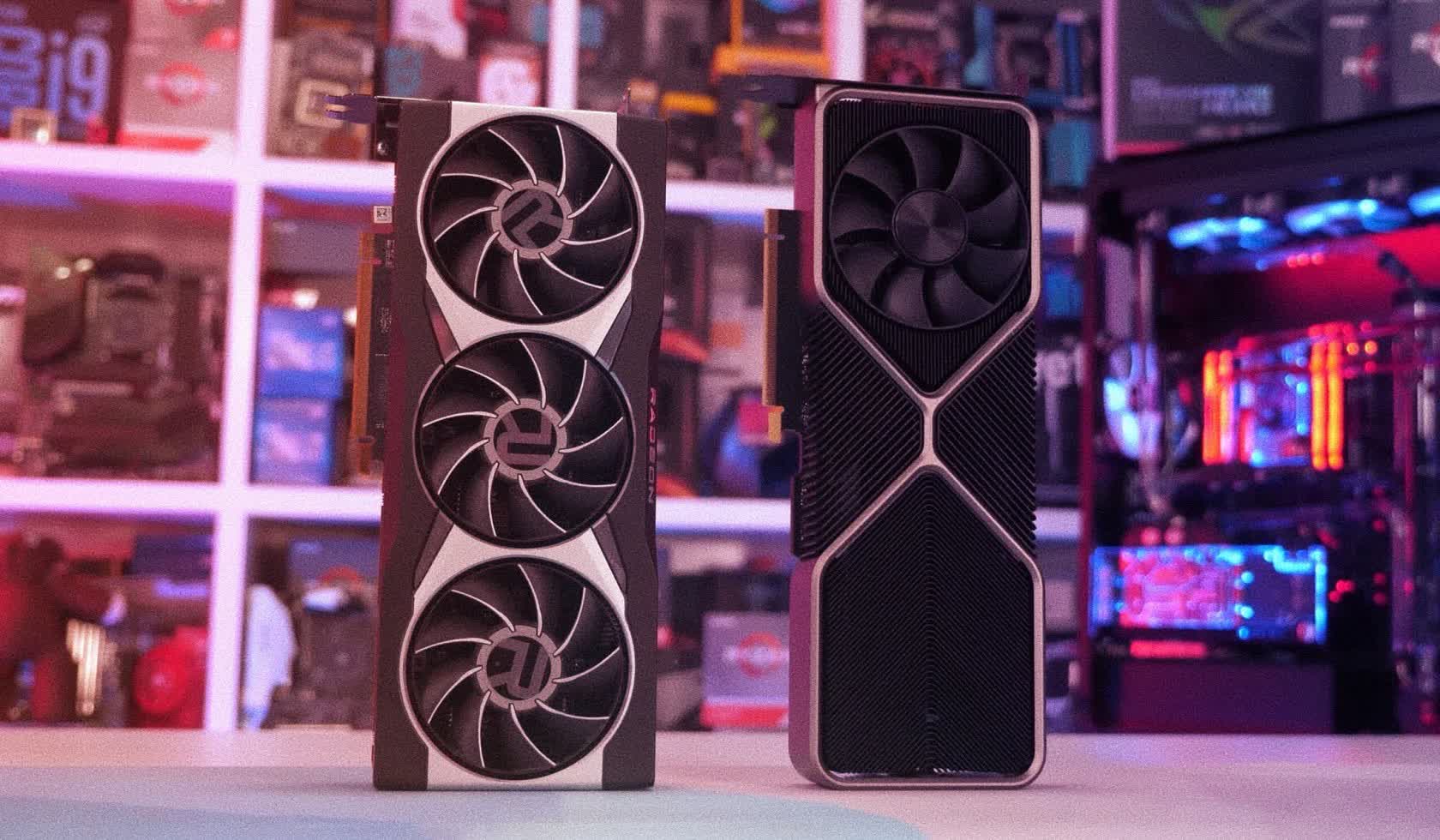
While we can't say for sure, the safe assumption many would make here is that a significant chunk of this inflated price is pure profit going into the hands of someone - exactly who, though, isn't known with certainty. If I had to speculate, the most likely reason for high prices is that OEMs and especially distributors are looking to cash in on sky-high demand. On top of that, there are genuine concerns around component availability, such as GDDR memory, raw materials, and surface mount components, plus increasing logistics costs.
These are all hurting the ability to manufacture cards at the suggested retail price. And while these reasons can be legitimate, it's also being used as an excuse to raise profit margins under the guise of "high demand, low supply." We wish we had better information for you, as to be able to pinpoint the exact reasons, but we don't.
Where are the RTX 3080s and 3060 Tis?
However, there are some points of clarity that we do have. One surrounds why the RTX 3060 Ti and RTX 3080 are significantly harder to find than other GPUs like the RTX 3070 and RTX 3090. This includes why the RX 6900 XT is easier to find than the RX 6800 XT, which is down to where Nvidia and AMD must prioritize their GPU supply.
If we take the RTX 3090 and RX 6900 XT as examples, these products are full or near-full versions of their respective silicon. To make an RTX 3080 or RX 6800 XT, the silicon needs to be cut down in some way, reducing the SM or CU counts to the level required for that product. Normally this is done through binning: a defective GA102 die may still be usable as an RTX 3080, but not as an RTX 3090, so it's reserved for the lower-tier card.
If defect rates on a certain product are good, then over time you might end up with a situation where it's possible to make many more RTX 3090s than RTX 3080s, because most GA102 dies could be binned for the 3090. Similar situation with the 6900XT and bins for the 6800 XT, there just may not be very many defective dies. However, when demand is fairly consistent and stock is sitting on shelves, it wouldn't make sense to produce a ton of RTX 3090s while RTX 3080s are scarce, so a company like Nvidia will often start cutting down "good" dies to make lower tier products to maximize sales. This is very common practice.
But when the higher-tier product is flying off shelves, and you have enough "good" dies to make them, it's in a company's best interest to prioritize the higher-tier part and clean up on large margins. That's what we are seeing in the market today: the only RTX 3080s, 6800 XTs and RTX 3060 Tis being made right now are from genuine defective dies, while the full silicon versions like the 3090, 3070, 3060 and 6900 XT are being prioritized. Nvidia is not turning GPUs that could be RTX 3090s into RTX 3080s: they are all going into 3090s. This is a basic explainer why we can expect to see awful stock for the RTX 3080 and RTX 3060 Ti for some time, at least until demand for the higher-tier equivalents dies down.
While this is bad for those products, it's good news for parts like the RTX 3060 and RX 6700 XT. Both of these use new dies and don't rely on defective versions of larger dies to be produced. It's too early to say how supply will play out, especially for the 6700 XT which hasn't even launched, but our expectation is that these parts should be relatively easier to obtain.
Cryptocurrency and Scalper Pricing Trends
The other promising thing that will affect GPU supply moving forward is cryptocurrency pricing. GPUs are being used in droves for mining, so if the price continues to increase on popular coins, there will be never-ending demand for GPUs to be used for that purpose.
Crypto pricing remains highly volatile. Since a peak in late February, crypto pricing had failed to reach that level again until these past few days when Bitcoin broke a new barrier. Mining on new GPUs remains highly profitable, so pricing plateauing is not going to instantly solve demand. And currently, GPU prices appear to be correlated to crypto prices.
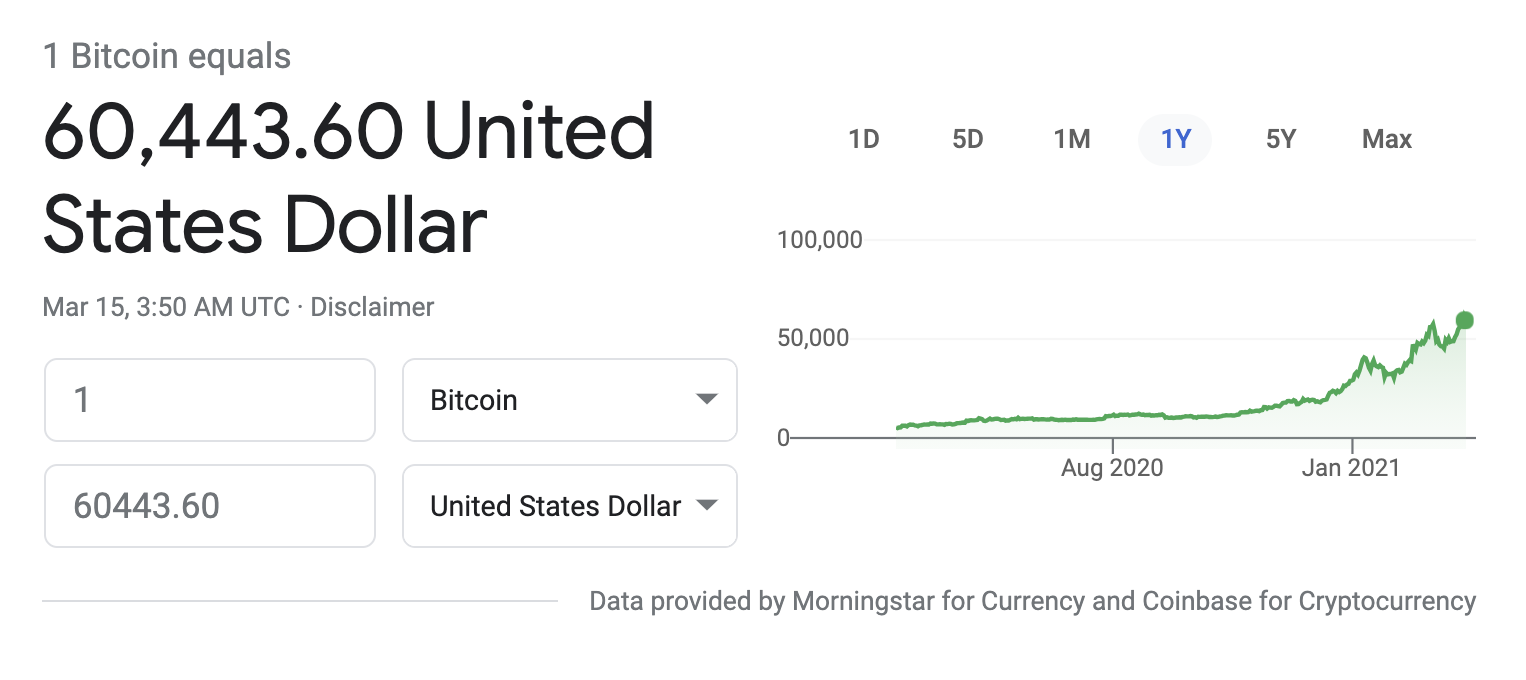
Back in mid-February when we discussed GPU pricing in a Q&A segment, we noticed that eBay completed listing prices for GPUs spiked dramatically around the same time as Ethereum prices spiked in late January, and were continuing to rise. This suggested that at that point, we hadn't even reached the peak of what GPU prices would be for new products.
Tom's Hardware has a great series going where they track used GPU pricing on eBay on a daily basis. Data from the last two weeks shows GPU prices flattening out and hitting a small downward trend, although the situation remains volatile. In any case, we're seeing what appears to be the peak in GPU pricing on the scalper market.
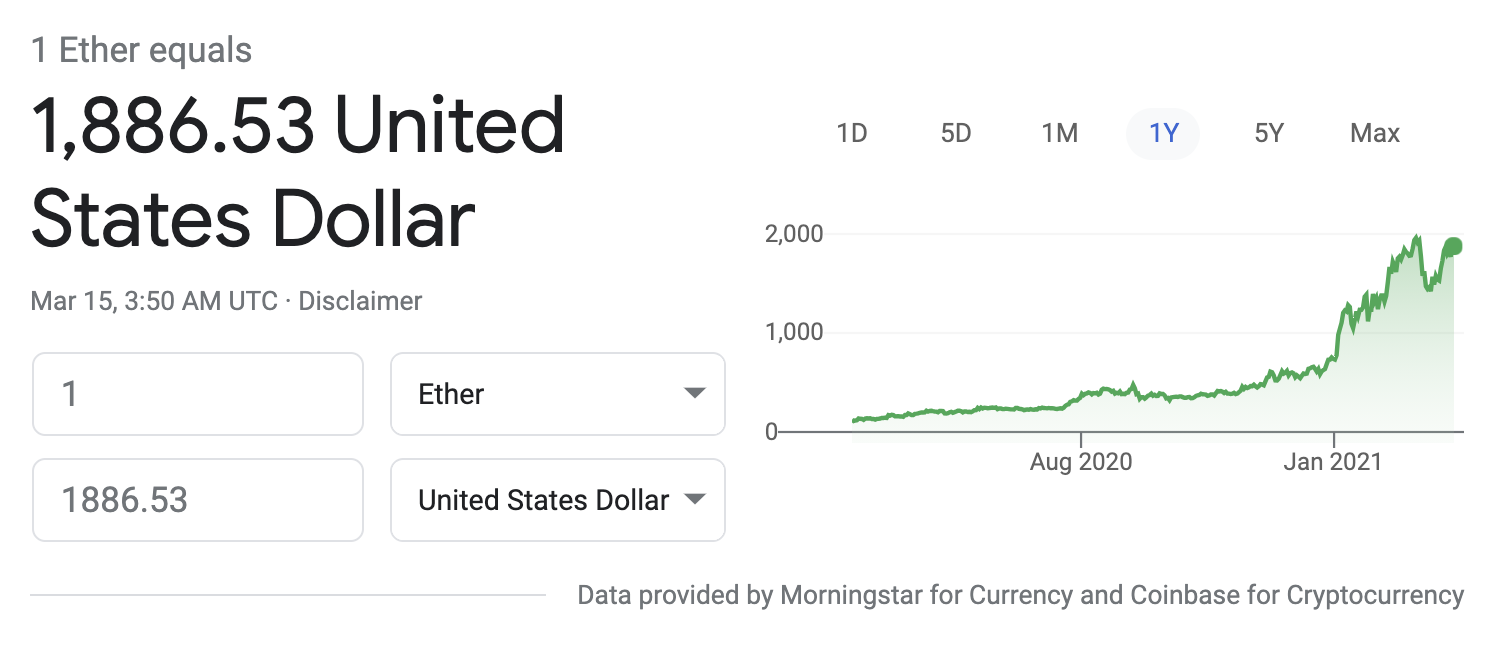
There are no guarantees what happens from here. If we see another huge spike in crypto pricing, we can expect to see that reflected in the GPU market. However, if things hold steady for a while, as has happened in the past after a strong boom in a certain coin, GPU pricing stabilizes and recovers as demand falls away. The steady stream of new GPU supply and the introduction of new mid-range products from both Nvidia and AMD will also be assisting here.
The overall situation is far from ideal for buying (any!) graphics card right now, but there is a tiny light at the end of the tunnel so to speak. This is something we'll continue to monitor over the next few months as hopefully we continue to see a downward trend.
Current CPU Market
Changing tunes to look at the CPU market, there's actually good news to share about their availability, with clear evidence things are improving and slowly returning to something that resembles normal.
Intel's 10th generation processors are widely available in the lead up to the 11th-gen launch later this month.
Intel's 10th generation processors are widely available in the lead up to the 11th-gen launch later this month. This has been true for a few months now, stretching back into 2020 you've been able to head to virtually any retailer and buy a 10th-gen processor without having to wait for restocks, and often these chips are priced below their listed tray price. So there's never been a better time to buy an Intel CPU.
Some examples of this include popular products like the Intel Core i5-10400F, which is listed on Amazon for just $149 as a boxed retail model, lower than Intel's $157 bulk tray price. The Core i7-10700KF is just $312, well down from its $360 recommended customer price, as is the Core i9-10900KF at $479. In fact, this Core i9 part was very difficult to find, especially in its non-F variant, for months after its launch but now is readily available at a discount.
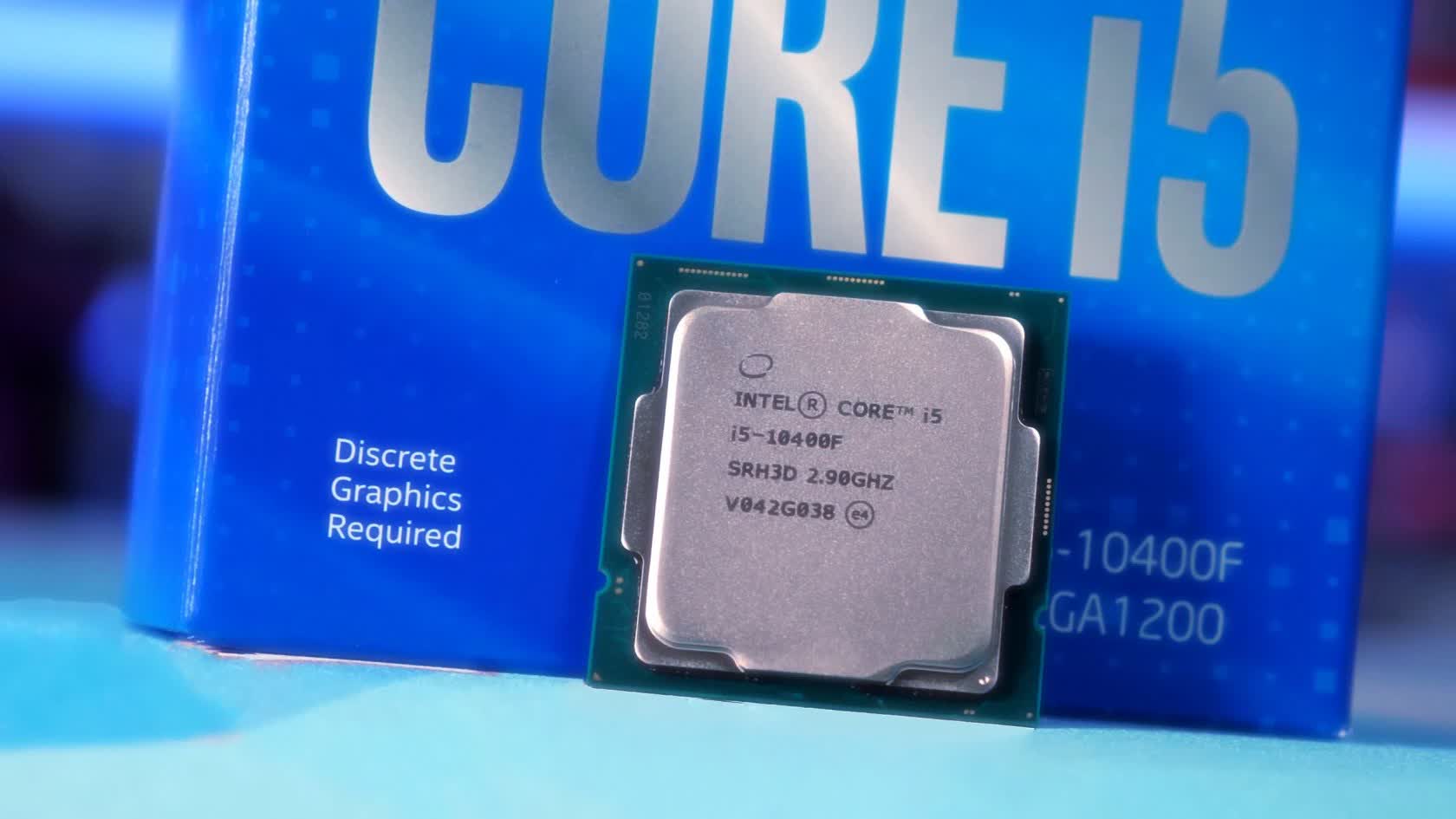
Now, these Intel processors may not be overly attractive to someone that needs the strongest possible productivity performance, at least compared to core-rich Ryzen parts, but they still represent very strong gaming performance. That doesn't look to be changing significantly with Intel's 11th-gen line either, based on some of the first 11700K reviews we've seen, so overall a positive on Intel's side of things depending on your use case.
Most of the Intel processors I searched for were available from major retailers, although not all are available at a discount like the wallet-friendly Core i3-10100. But overall, Intel's stock situation is looking healthy and given upcoming Rocket Lake chips are also built on 14nm, there is no reason to believe that supply will be severely constrained on Intel's side.
Ryzen CPUs Returning to Stock
But I'm sure what many people are wondering is: what is the situation with Ryzen processors. And there's good news to share here as well...
As of writing, both the Ryzen 7 5800X and Ryzen 5 5600X are in stock on Amazon at their respective MSRPs: $449 and $299. From looking at several other retailers around the world, this looks to be an increasingly common situation, though your mileage will vary of course. In Australia you can buy the 5800X easily and the 5600X at some retailers.
There's good news to share about Ryzen 7 and Ryzen 5 availability as well...
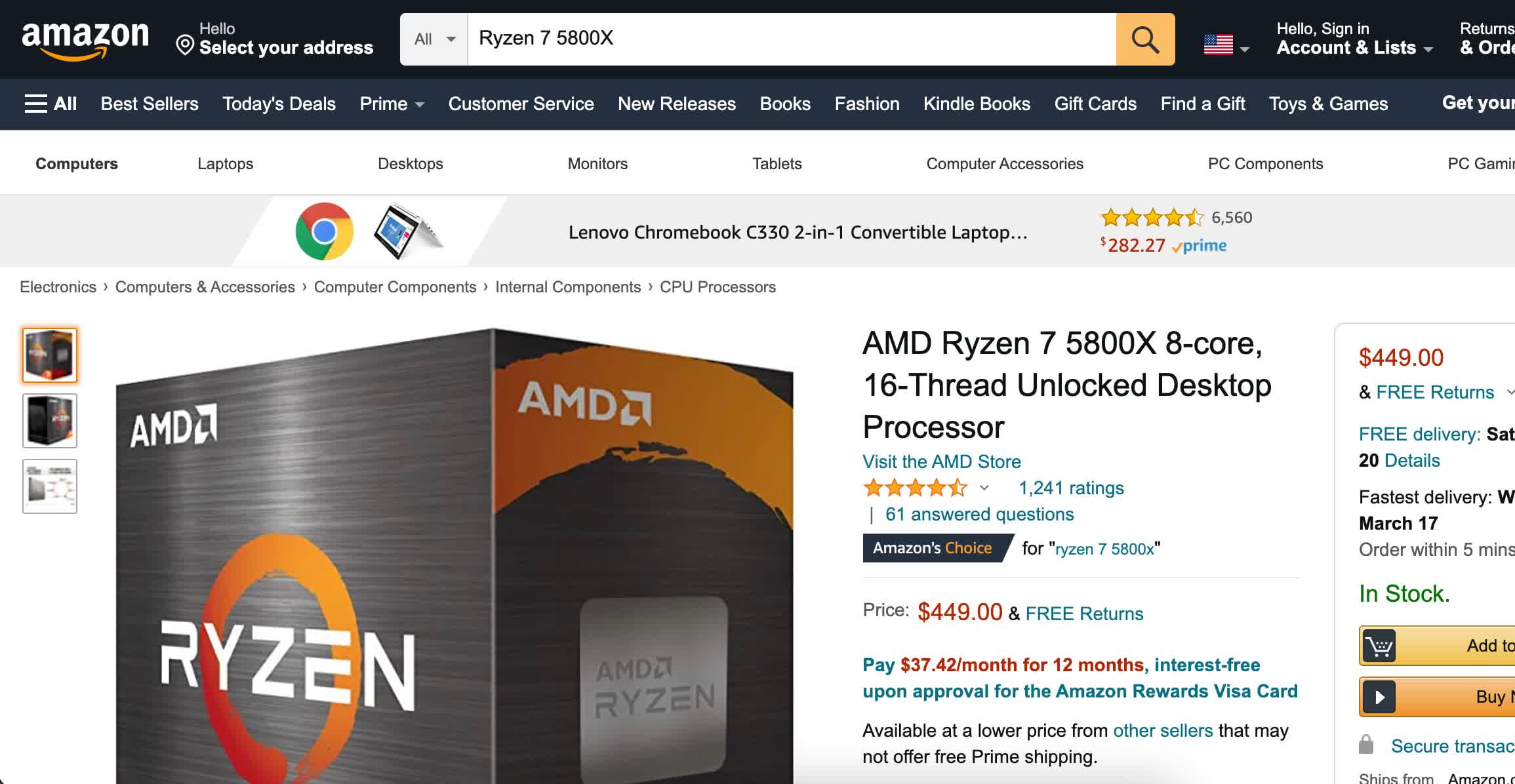
At Mindfactory over in Germany they are expecting stock within days, Overclockers.co.uk has stock right now, we could go on, but you get the idea. It's taken around 4 months, but we're finally getting there.
This is good timing for AMD, or should we say necessary. Intel are almost set to launch new 11th-gen processors on March 30, and we know these parts top out at 8 cores. Having AMD's six and eight core processors readily in stock provides competition to Intel's new Rocket Lake parts. Strong competition always benefits the consumer and having components in stock is the first step to what will hopefully be a price battle for high performance processors.
Where are the Ryzen 9 CPUs?
What remains incredibly difficult to find are AMD's Ryzen 9 processors, the Ryzen 9 5900X and Ryzen 9 5950X. These are out of stock essentially everywhere, with supply only filtering in slowly. Australian retailer PC Case Gear has told us that the supply vs demand situation for the 5950X is a little better than the 5900X right now; they are expecting all remaining orders to be filled by the end of the month. The 5900X isn't so lucky, with PCCG still working through a backlog of orders from December. Other retailers like Mindfactory aren't even listing Ryzen 9 parts right now, with others not allowing pre-orders so you'll have to keep a look out if you want to score a part at the MSRP.
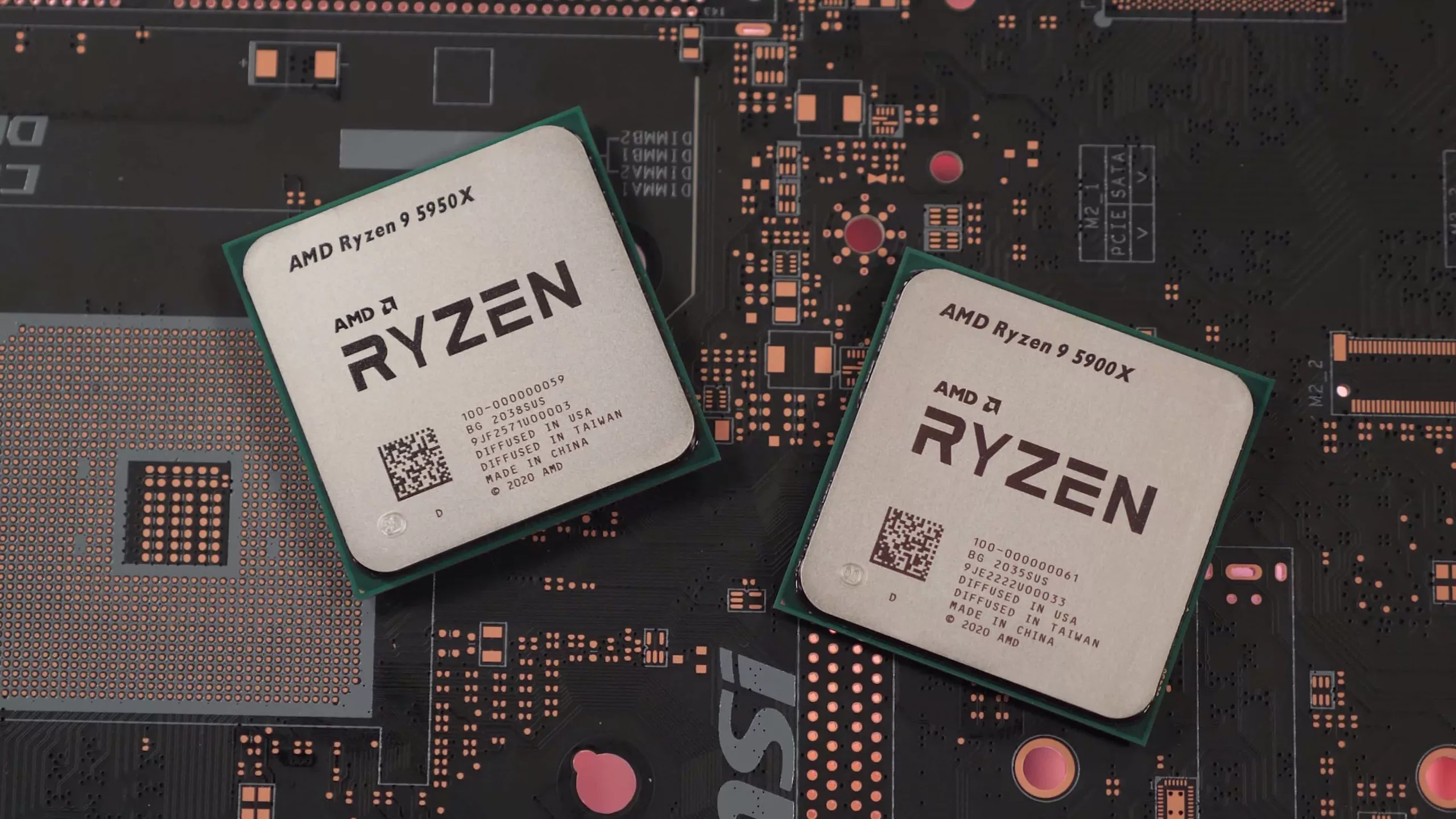
But why are Ryzen 5 and 7 processors available, but the higher-end parts are not? Surely AMD would want to sell more of their expensive CPUs and less of their lower tier products, right? Well, it's a bit more complicated than that, especially when we factor in the supply constraints at TSMC's 7nm fabs.
One factor that's playing into this is that AMD is about to launch new Epyc CPUs, which use the exact same 7nm chiplets as the Ryzen 5000 desktop line-up. As we know from the binning process, some of these chiplets are better than others, and on the desktop line, generally these better chiplets go into higher-end, higher clocked parts like the 5950X, leaving the lesser quality silicon for say, a 5800X if all CPU cores are intact.
But the better binned chiplets are not only in demand with the 5950X, but also with server-bound Epyc CPUs, which require the best silicon for efficiency and frequency reasons depending on the part. While AMD can focus most of the lower bins towards 5800X parts, supply of better bins – which tend to be only a small portion of the overall amount of chiplets produced – need to be split between 5950X and Epyc. Generally speaking, server parts are higher margin, so AMD is going to focus their efforts there.
The 5900X ends up in the worst position for a multitude of reasons. This part requires two six-core chiplets. If yields are good, then the amount of six core chiplets being made is going to be limited, and if AMD is selling through their entire stock of eight-core chiplet parts (5800X and 5950X) then there would be no reason to cut down working eight core chiplets to make six-core chiplet CPUs. On top of that, the 5900X requires a better bin of these six-core chiplets than the 5600X to hit higher frequencies of 4.8 GHz boost versus 4.6 GHz. Demand for the 5900X is higher than a 5950X, too, so we foresee this low stock environment to continue for some time. At least until parts like the 5950X and Epyc aren't flying off the shelves as fast as they can make them.
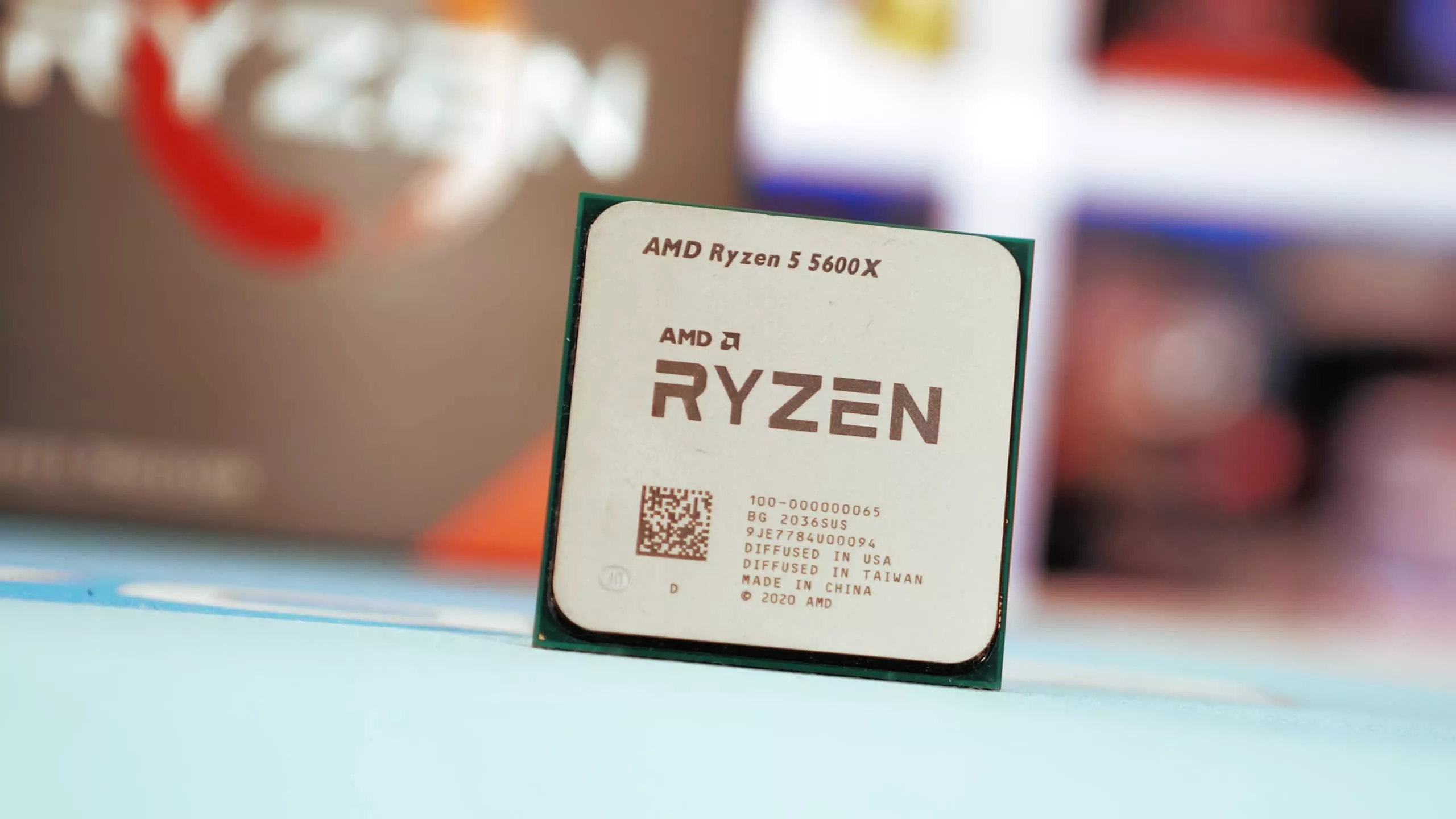
With limited supply of six-core chiplets, AMD is also juggling a situation where they may have the option of selling one 5900X or two 5600X processors. There could be several reasons why AMD may prefer to sell two 5600X parts for now, such as upcoming competition from Intel, and the fact that the 5900X is less than twice as expensive as the 5600X, although that's a large oversimplification of the product costs associated with these parts.
The general point here is that we wouldn't expect the 5900X to be overflowing with stock any time soon, if anything this will be the last processor to be widely available.
Last-gen CPU Prices
While Ryzen 5000 supply is improving for the 5600X and 5800X, it's not good enough yet to cause flow on effects for older products. Parts like the Ryzen 5 2600 and Ryzen 5 3600 are in stock, which is a good thing, but pricing remains at MSRP levels for CPUs that are approaching 2+ years of existence.
The mainstream Ryzen 5 3600 at one point in mid 2020 was selling as low as $170, but it's now back up to its $200 MSRP. The previous-gen Ryzen 5 2600 has a historic low in the region of $120, but for the last few months it's been closer to $190. That's how much the 7nm supply situation has been affecting older processors.
If you're ever faced with a choice between a two-year-old Ryzen CPU at its launch price, or an Intel 10th-gen processor, you may be better off with the Intel part. Something like the Intel Core i5-10400F at $150 seems like a much better deal than a Ryzen 5 2600 at $190, to cite just one example.
We'll keep monitoring CPU and GPU pricing and keep you in the loop in our news coverage and longer features like this if the timing looks right. Also don't forget you can watch historical pricing graphs in our Product Finder for all of these products and create email alerts, so you're notified when a price drop occurs.
